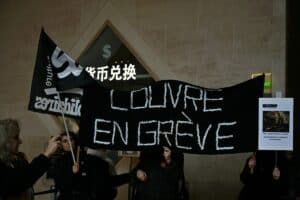Discover Ludumo 'Toto' Maqabuka's thought-provoking portraits that delve into South African identity, bridging past and present, rural and urban.

In the bustling metropolis of Johannesburg, amid the urban pulse of creativity and culture, lives an artist whose work speaks volumes about the intricate tapestry of South African life.
Ludumo “Toto” Maqabuka, born in Mthatha, Eastern Cape, in 1982, is a prominent figure in the contemporary art scene. He infuses his creations with the raw essence of his roots and the dynamic energy of the city.
Rendered with a style reminiscent of vibrant solid colours, homemade stencils, spray paint and with each element carefully chosen to “imbue his subjects with a sense of vitality and depth”, his portraits have been described by fans and peers as “thought-provoking and ground-breaking”.
Portraits invoke different emotions
Maqabuka’s portraits are likely to invoke different emotions due to the recurring theme of figures, be they social or political.
With each stroke of his brush, he invites viewers into a world where the personal and the political intersect, where individual stories converge to form a collective narrative of South African identity.
“I’ve heard people explain how beautiful they think my portraits are, how they’ve made them feel, how they’ve changed how they see things and people. And that is all I can ever ask for,” he says.
ALSO READ: Elton John items fetch almost $8 million on New York auction
While explaining his emotions and thoughts during the process, he says it always felt like therapy.
“It feels like I’m letting go of something, it just takes me to another state of mind, it makes me feel like a different kind of person,” says Maqabuka.
“I know how my work makes me feel when I’m in the zone and busy, and I love that it does the same for those who are admiring it.”
Subjects serve mirror of society
His subjects – be they young urbanites navigating the complexities of city life, a famous singer, politician or a friend – serve as a mirror of society, reflecting its triumphs, struggles and aspirations.
Maqabuka’s graffiti-like portraits strive to ignite a dialogue about the complexities of modern society, bridging the gap between past and present, rural and urban, tradition and innovation.
His artistic odyssey began with humble origins and was marked by an innate passion for self-expression, a love for drawing, visual storytelling and a keen eye for the nuances of human experience.
ALSO READ: Don’t play ‘Phakama Ramaphosa’ at January 8, gatvol artist tells ANC
“From just doodling on a page every day, I taught myself to draw,” he remembers.
“All my portraits tell a story about my background, whether they are about me or not. They have an essence of my background in them.”
Fine arts always part of his life
Maqabuka says while he cannot remember where his love for fine arts stemmed from, it has always been a part of his life.
“I don’t remember a time where I was not doing it, so I can say for as long as I remember,” he adds.
In 1995, after his grandmother’s death, Maqabuka moved from his hometown with his sister to live in Vosloorus, a large township south of Boksburg and east of Katlehong in Ekurhuleni, where he completed his primary education at Thembekazi Primary School.
“Even then, I kept up with my love for drawing, I would draw everyone and everything around me. When I got to high school in Dawnview, Germiston, I did it formally as a subject and fell in love with it even more,” he says.
ALSO READ: Artists are walking a tightrope
After this, he trained formally at the Tshwane University of Technology (TUT) in Pretoria where he studied for a national diploma in fine art and graphic design in 2007.
Painting and drawing
His majors were painting and drawing.
“So art has always been a passion for me, even when I only understood it as a hobby,” says Maqabuka.
“Growing up I wanted to be an electrical engineer because I loved science – both science and biology were my favourite subjects.
“But after my first year at TUT, I knew that this was my path, my destiny, and that I would not be happier doing anything else but drawing and painting.”
However, Maqabuka says his true education came from the streets where he absorbed the vibrant pulse of urban life and the rich tapestry of South African culture.
ALSO READ: Renowned dancer Gregory Maqoma ‘humbled’ by Human Rights award
In 2009, he made his artistic debut with his first solo collection, titled +27, which was exhibited at the Design Cafe in Pretoria.
This inaugural showcase served as a glimpse into the artist’s soul, revealing his deep-seated connection to his homeland and his unyielding commitment to portraying its multifaceted identity.
From there, he ascended to greater artistic heights by exhibiting his portraits across the province to working with Nando’s on its Nando’s creative exchange programme and its Spier arts programme and Creative Block.
Covid knock-on effect on industry and artists
Like many artists, Maqabuka says Covid had a knock-on effect on the industry and on artists.
“It was hard for everyone, but I think one thing that kept me going was my love for what I do.”
Maqabuka encourages upand-coming and established artists by saying: “It’s doable, just believe in yourself and push.”
ALSO READ: Artist’s trauma drives her to success






